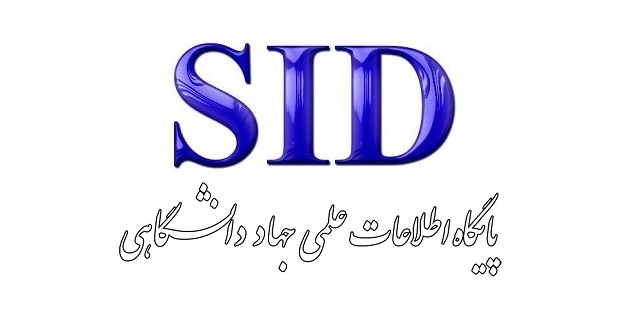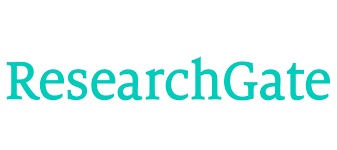ارزشگذاری منابع انسانی با رویکرد توسعه قابلیتهای منابع انسانی: مدلی ساختاری-تفسیری برای شرکت ملی گاز ایران
کلمات کلیدی:
ارزشگذاری منابع انسانی, قابلیتهای منابع انسانی, سرمایههای انسانی, شرکت ملی گاز ایرانچکیده
مدلسازی ارزشگذاری منابع انسانی با رویکرد توسعه قابلیتهای منابع انسانی، راهکاری علمی برای سنجش و ارتقای توانمندیهای کارکنان در راستای خلق ارزش پایدار ارائه میدهد. این پژوهش به طراحی الگویی برای ارزشگذاری منابع انسانی با تأکید بر توسعه قابلیتهای منابع انسانی در شرکت ملی گاز ایران پرداخته است. این تحقیق با رویکرد آمیخته شامل روشهای کیفی و کمی انجام شده است. در بخش کیفی، جامعه آماری شامل 266 مقاله مرتبط با منابع انسانی صنعت نفت بوده که از میان آنها، بر اساس روش سندلوسکی و باروسو، 46 مقاله انتخاب شدهاند. در بخش کمی، جامعه آماری شامل 40 نفر از اساتید، خبرگان، مدیران و کارشناسان شرکت ملی گاز ایران بوده است که به روش هدفمند تعداد 20 نفر و در گروه کانونی 15 نفر به عنوان نمونه انتخاب شدهاند. اعتبار ابعاد کشفشده از طریق ابزار گلین و روش کسپ تأیید شده و پایایی با استفاده از ضریب آلفای کرونباخ سنجیده شده است. تجزیه و تحلیل دادهها از طریق آمار توصیفی و استنباطی انجام شده است. در این تحقیق، 240 شاخص در قالب 54 مؤلفه شناسایی شدند و پس از غربالگری با روش دلفی، 238 شاخص تثبیت شدند. مدل ارزشگذاری منابع انسانی در شرکت ملی گاز ایران شامل 16 بعد مرتبط با توسعه قابلیتهای منابع انسانی بود که از طریق تحلیل گروه کانونی تفکیک و طبقهبندی شدند. برای طراحی و سطحبندی مدل، از نرمافزار میکمک و روش مدلسازی ساختاری-تفسیری استفاده شد که خروجی آن شامل 6 سطح بود. این ابزار نقش مهمی در تحلیل روابط میان متغیرها و تعیین سطحبندی آنها داشت.
دانلودها
مراجع
Ali, M., Hossain, M. S., & Anik, R. H. (2021). Determinants of Human Resource Accounting Disclosure: An Analysis on Dhaka Stock Exchange (DSE) Listed Financial Institutions. The Jahangirnagar Journal of Business Studies, 9(1), 181-196. https://www.researchgate.net/profile/Md-Hossain-374/publication/349915597_Determinants_of_Human_Resource_Accounting_Disclosure_An_Analysis_on_Dhaka_Stock_Exchange_DSE_Listed_Financial_Institutions/links/604721b692851c077f27e29f/Determinants-of-Human-Resource-Accounting-Disclosure-An-Analysis-on-Dhaka-Stock-Exchange-DSE-Listed-Financial-Institutions.pdf
Beheshti Far, M., Arjmand, S., Pourkiani, M., & Sheikhi, E. (2020). Proposing a model for effective strategic human resource capabilities. Foresight Management Journal, 123. https://www.google.com/url?sa=t&source=web&rct=j&opi=89978449&url=https://www.magiran.com/paper/2341333/
Damouri, D., Sabk Roo, M., Razavi, H., & Seyed, M. (2021). Characteristics of value-creating human capital based on a non-monetary valuation approach: Case study: Bank Melli Iran. Experimental Accounting Research, 39, 241-277.
El Tannir, M. (2024). The Interplay of Alliance Governance, Cooperation and Coordination in Interorganisational Projects: A Viable Alliance Model Perspective Doctoral dissertation, UCL (University College London)]. https://discovery.ucl.ac.uk/id/eprint/10187180/
Fattah, R. R., Amiri, M., Seyed Javadian, S. R., & Norouzi Seyed Hosseini, R. (2023). Designing a policy-making model based on the development of human capabilities in the Ministry of Education of the Kurdistan Region of Iraq. Public Management, 15(4), 696-719. https://jipa.ut.ac.ir/article_95973.html
Herrera, J., & de las Heras-Rosas, C. (2020). Corporate social responsibility and human resource management: Towards sustainable business organizations. Sustainability, 12(3), 841-852. https://doi.org/10.3390/su12030841
Jalali Sohi, A., Nezami, M. R., Bakker, H., & Hertogh, M. (2021). Inter-Organizational Co-Creation: An Approach to Support Energy Transition Projects. In: Research on Project, Programme and Portfolio Management: Integrating Sustainability into Project Management, 151-166. https://doi.org/10.1007/978-3-030-60139-3_11
Kariminajad, M. (2022). Examining human resource accounting as a powerful and valuable tool for an organization. Quarterly Journal of New Research Approaches in Management and Accounting, 6, 143-155. https://www.google.com/url?sa=t&source=web&rct=j&opi=89978449&url=https://www.majournal.ir/index.php/ma/article/view/1245&ved=2ahUKEwiFp8SbubCOAxWQT6QEHY1PF8YQFnoECB0QAQ&usg=AOvVaw2VA4HrK_l9E6t6MZpgp3M5
Khaki, N. A., & Shojaei Mehr, R. (2024). Investigating the impact of human resource accounting on the financial performance of organizations. Accounting and Management Perspectives, 7(89), 24-35. https://www.google.com/url?sa=t&source=web&rct=j&opi=89978449&url=https://www.jamv.ir/article_197722.html&ved=2ahUKEwj82-axubCOAxXGfKQEHbyjPW4QFnoECBcQAQ&usg=AOvVaw0n2fDnHEFWyid9YwR31M1G
Khan, S. (2021). Impact of human resource accounting on organizations' financial performance in the context of SMEs. Journal of Accounting, 7, 621-628. https://doi.org/10.5267/j.ac.2020.12.016
Khodadadi Didani, H. R., Sar Golzai, A., & Pour Shahabi, V. (2024). Designing and validating a human resource development model to achieve supply chain sustainability in the shipping industry. Supply Chain Management Journal, 26(83), 1-15. https://www.google.com/url?sa=t&source=web&rct=j&opi=89978449&url=https://civilica.com/doc/2070095/&ved=2ahUKEwiu86i7ubCOAxW3U6QEHVGrDooQFnoECB4QAQ&usg=AOvVaw3ZTI8FTQmY8gDjdfpMBaDQ
Li, K. (2024). Unveiling the Dynamics of Human Capital Valuation: Insights from Human Resource Accounting. Pacific International Journal, 7(2), 2616-4825. https://doi.org/10.55014/pij.v7i2.224
Mohammadi, M., Amiri, M., Abasian, E., & Norouzi Seyed Hosseini, R. (2024). A model for the development of human capabilities in government organizations with an emphasis on territorial planning. Organizational Behavior Studies, 13(1), 67-108. https://www.google.com/url?sa=t&source=web&rct=j&opi=89978449&url=https://obs.sinaweb.net/article_713725.html&ved=2ahUKEwjSvrfaubCOAxWDdaQEHeRrNA0QFnoECBoQAQ&usg=AOvVaw1Vy_sqLs5eGc4c3cvP2fUP
Mohammed, A. N. (2021). Level of Disclosure of Human Resources Accounting in the Financial Statements: An Exploratory Study of Several Companies Operating in the Iraqi Environment. Review of International Geographical Education Online, 11(5), 3537-3559. https://rigeo.org/menu-script/index.php/rigeo/article/view/1236
Nezami, M. R., de Bruijne, M. L., Hertogh, M. J., & Bakker, H. L. (2024). Assessment criteria for inter-organizational collaboration in interconnected infrastructure projects. Engineering, Construction and Architectural Management. https://doi.org/10.1108/ECAM-11-2022-1109
Oladele, P. O., Olugbena, A. F., Lateef, A. O., & Ajayi, O. M. (2018). An empirical study of human resource accounting disclosure on financial performance of selected listed firms in Nigeria. Journal of Accounting Management, 8(2), 70-82. https://www.zbw.eu/econis-archiv/bitstream/11159/3077/1/1666279811.pdf
Ouppara, N., Fallon, W., & Coronado, G. (2024). Rethinking inter-firm dynamics from a small firm perspective: the case for inter-organizational bullying. Journal of Business & Industrial Marketing. https://doi.org/10.1108/JBIM-04-2024-0298
Poorkamali, M., Amiri, H., Parsa Moein, K., & Bikzadeh Abbasi, F. (2022). Developing a Pattern for Employee Valuation in the Banking System Based on Human Resource Accounting Approach. Iranian Journal of Educational Sociology, 5(3), 67-82. https://doi.org/10.61186/ijes.5.3.67
Rafi, A. N. M., & Hossain, M. T. (2018). Human Resource Accounting: Issues, Beneficial Proponents and Constraints. Global Journal of Management and Business Research. https://www.academia.edu/download/74182499/HRM.pdf
Rahimi, S., Talab Nia, Q., Hajazi, R., & Ranjbar, M. (2022). Designing an effective human resource valuation model using qualitative methods. Scientific Journal of Capital Investment Research, 11(3), 523-541. http://www.jik-ifea.ir/article_19361.html
Ronaghi, S. S., Hosseini Semnani, A. A., & Safari, L. (2024). Foresight in human resource development in the sports tourism industry. Technology in Entrepreneurship and Strategic Management, 3(1), 152-168. https://doi.org/10.61838/kman.jtesm.3.1.10
Salehi Zadeh, M. (2024). Investigating the impact of human resource accounting on organizational productivity. https://www.google.com/url?sa=t&source=web&rct=j&opi=89978449&url=https://civilica.com/doc/2134797/&ved=2ahUKEwjcr-inurCOAxW_dqQEHXH3LIoQFnoECBcQAQ&usg=AOvVaw1Lw8lGwZV_qHHlzYXYV3Km
Sharma, C., & Shoeb Ahmad, S. S. (2022). Impact of Human Resource Practices on Individual and Organization Growth. https://doi.org/10.1109/DASA54658.2022.9765203
Soodi, A., Mohammadi, M., Rezaei Far, H., & Mahmoudzadeh, M. (2024). Proposing a human resource development model for organizational excellence in the National Drilling Company of Iran. Strategic Studies in Oil and Energy, 16(61), 43-64. https://www.google.com/url?sa=t&source=web&rct=j&opi=89978449&url=http://iieshrm.ir/article-1-1653-fa.html&ved=2ahUKEwi7nNO9urCOAxU8XaQEHTR-DbkQFnoECBUQAQ&usg=AOvVaw3-44UyvAj4Dnj9_Qrkqr6x
Taghvaei, M., Nazia Sadat, N., & Elham, F. (2024). Modeling human resource development with a visionary leadership approach in the General Education Department and seven regions of Mashhad: A mixed-method study. Quarterly Journal of Education and Human Resource Development, 5(2), 47-58. https://www.google.com/url?sa=t&source=web&rct=j&opi=89978449&url=https://sanad.iau.ir/Journal/jtihr/Article/991250/FullText&ved=2ahUKEwiXlurIurCOAxXxRqQEHcZmOWkQFnoECBcQAQ&usg=AOvVaw2Eemo3vIBk9a0wqEy1jjwU
Thompson, L. (2025). Human capital disclosures and institutional ownership. Finance Research Letters, 1544-6123. https://doi.org/10.1016/j.frl.2024.106384
Vaezhi, K., Mehrabian, F., & Shafiei Pour, M. (2019). Designing a model for measuring the value of human assets based on a non-monetary approach at Gilan University of Medical Sciences. Journal of Gilan University of Medical Sciences, 28(4), 31-47. https://www.google.com/url?sa=t&source=web&rct=j&opi=89978449&url=https://www.sid.ir/paper/410984/fa&ved=2ahUKEwj0m8jWurCOAxXKUqQEHQHENwgQFnoECBoQAQ&usg=AOvVaw0odeiGMjPVbOGx5r5QWhFZ
Zohraei, S. (2024). The role of human resource accounting in the efficiency and effectiveness of organizations. Management and Accounting in the Third Millennium, 28, 103-122. https://www.google.com/url?sa=t&source=web&rct=j&opi=89978449&url=https://www.noormags.ir/view/fa/articlepage/2167177/
دانلود
چاپ شده
ارسال
بازنگری
پذیرش
شماره
نوع مقاله
مجوز
حق نشر 2025 تهمینه سلطانی, فؤاد مکوندی, محمد همتی (نویسنده); وحید چناری (مترجم); قنبر امیر نژاد (نویسنده)

این پروژه تحت مجوز بین المللی Creative Commons Attribution-NonCommercial 4.0 می باشد.









